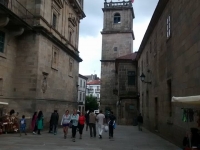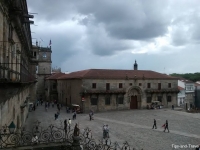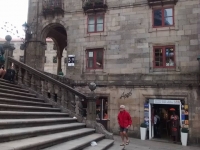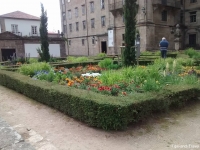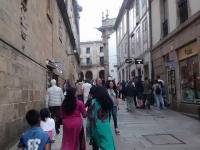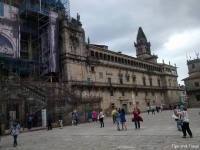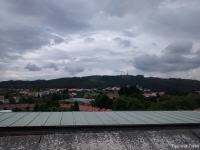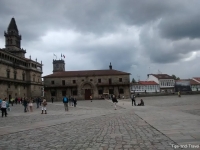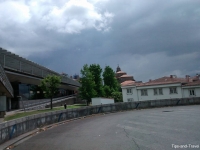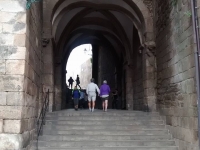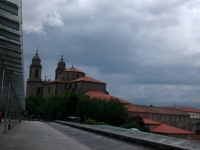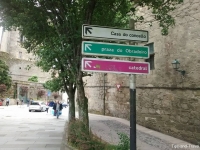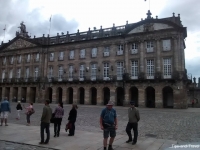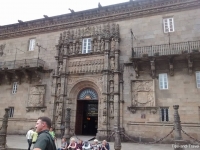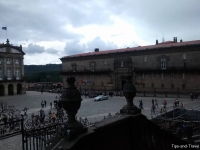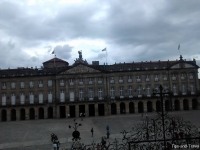The cathedral of St. James of Compostela, dedicated to the Apostle James of Zebedee (saint patron and protector of Spain) is a cathedral located in the historical center of the city of St. James of Compostela, purpose of one of the great pilgrimages of medieval Europe; initiatory way in which people followed the wake of the Milky Way. At the beginning of the ninth century, Alfonso II had built the first church; in 899, Alfonso III replaced it for a greater pre-Romanesque church. The present cathedral is a Romanesque building built in granite, which work began in 1075 and was finished in 1211. It is dedicated to the relics and pilgrimages. The two towers of the western façade (Baroque churrigueresque) are from the Middle Ages and its monumental staircase of 1606. Its chapels form a museum of paintings, sculptures, reliquaries and altar pieces accumulated over the centuries. The cathedral has a plan of three naves, a large transept with aisles and stands and a sanctuary with ambulatory surrounded by a ring of chapels. The original plan had additions of the Renaissance and Baroque. A sumptuous statue of St. James is in the main altar; the crypt is below with the remains of St. James and his disciples, St. Theodore and St. Athanasius. The ambulatory, the beautiful gates, the vault of the Chapel of Mondragón, the Renaissance door of the sacristy and the cloister are the most outstanding items. Above the transept of the cathedral stands a lantern tower from whose summit is hung by steel cables a brass censer of 54 kilos which is used in special ceremonies as in Compostelan years. The treasure is housed in a Gothic chapel in the south transept of the cathedral; it has a tympanum representing the equestrian figure of the Apostle (XIII century). The King of France, Charles V had made a very important gift for it to be celebrated daily a mass for the prosperity of France, so the San Salvador chapel is also known as the Chapel of the King of France; this is where the pilgrims after confessed, received the Compostela; certificate of pilgrimage.
Tips
Pilgrims can go to kiss the holy mantle by a staircase behind the altar.
You can also visit the library which displays the censers and tapestries (it’s part of the cathedral museum), even as the pieces found in the excavations .
The archives of the cathedral has a copy of the Codex Calixtinus (set of texts dated around 1140); in the texts you can find practical advice for pilgrims.
